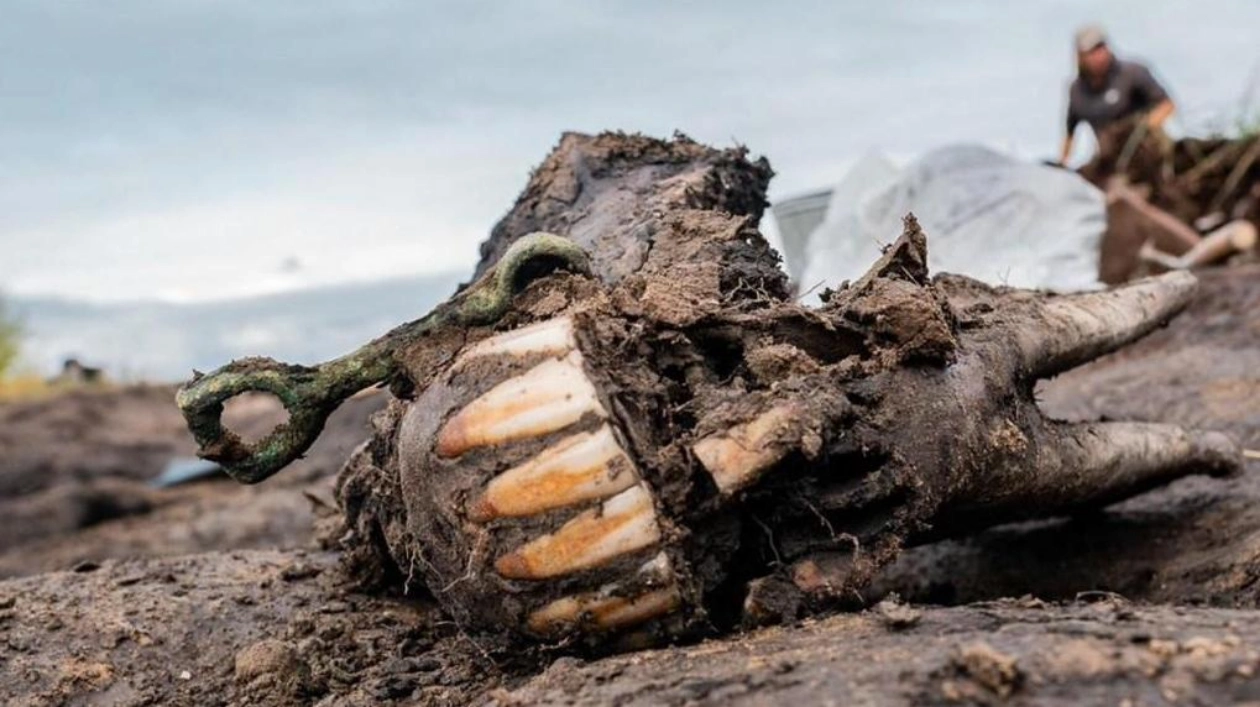Horse-riding Scythian herders and warriors, who inhabited Central Asia and Eastern Europe around 2,500 years ago, might have had cultural roots several thousand kilometers to the east in Siberia, according to a new study (SN: 7/27/23).
Archaeologist Gino Caspari and colleagues report in Antiquity on October 7 that the remains of at least one person and 18 horses found atop a roughly 2,800-year-old tomb in southern Siberia could be from a Scythian-style sacrificial ceremony for a king or other elite individual interred there. Artifacts recovered at the Tunnug 1 burial mound include two bronze belt fittings decorated with stylized animals similar to those in later Scythian art, horse-riding gear, and metal and bone arrowheads.
People at Tunnug 1 belonged to an unidentified herding population, says Caspari, of the Max Planck Institute of Geoanthropology in Jena, Germany. “Cultural characteristics found at this early burial became key to the culture of Scythians much further west.” This suggests that mounted Siberians took only a few hundred years to ride west across much of Asia, influencing Scythians’ artistic and burial practices along the way, according to the researchers.
Discoveries at the Siberian site may represent remnants of a burial ritual similar to that described by Greek historian Herodotus for deceased Scythian kings in Eurasia. In Herodotus’ account, 50 sacrificed servants to the king were mounted on 50 sacrificed horses. The dead were held in place atop the ruler’s burial mound by stakes driven through their bodies, creating a group of “spectral riders.”
Poor preservation of exposed bones at the Siberian site prevents the recovery of the original number of people and horses on the mound’s upper surface. However, remnants of birch stakes among the Tunnug 1 bones and artifacts align with a spectral riders scenario, Caspari says.






